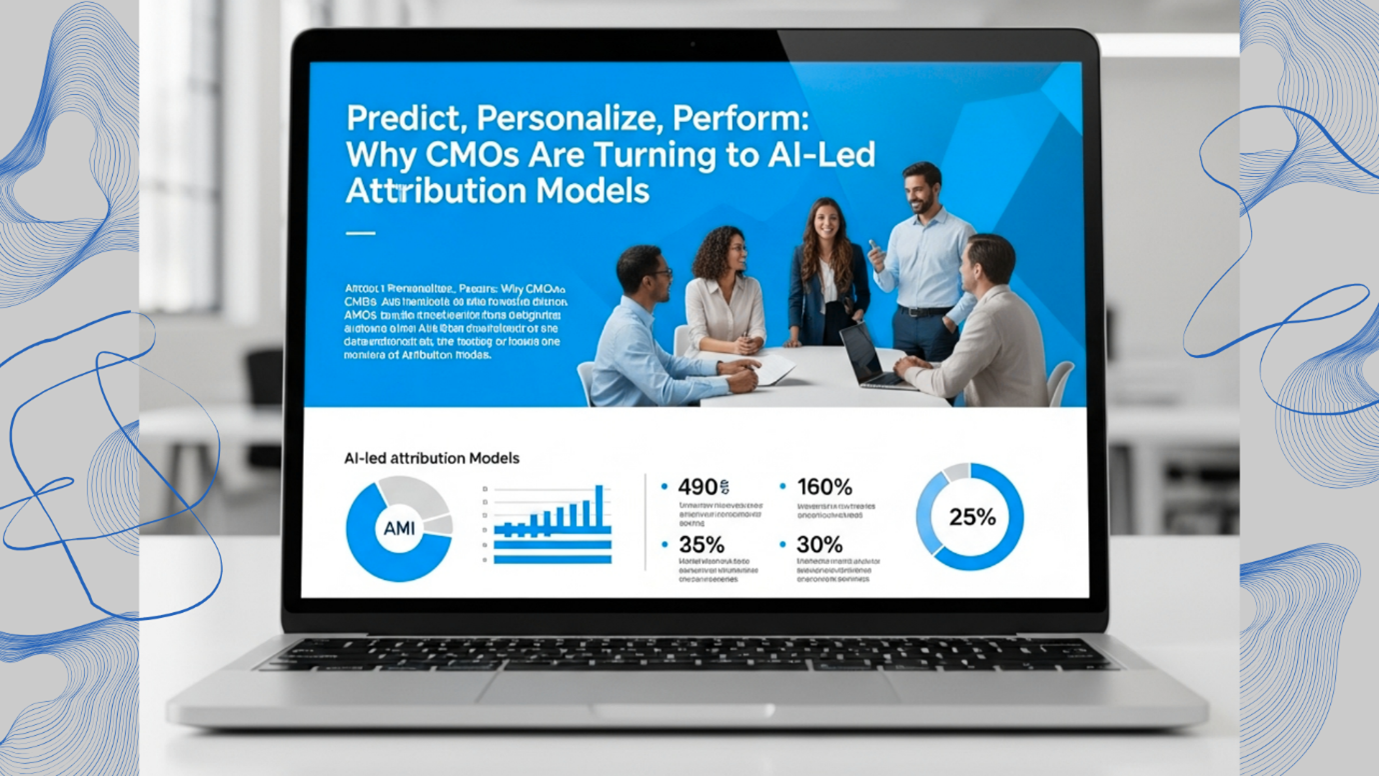 Loading Please Wait...
Loading Please Wait... Loading Please Wait...
Loading Please Wait...
In today’s marketing landscape, Chief Marketing Officers are expected to deliver not only growth, but proof of performance. Every dollar spent must be accounted for. Every impression must tie back to outcomes. Yet, traditional attribution models — first-touch, last-click, linear — are falling apart under the complexity of modern consumer journeys.
In this environment, AI-led attribution models are no longer optional. They are becoming the strategic nerve center for performance-driven marketing organizations. From budget optimization to personalized engagement strategies, AI is helping CMOs replace assumptions with intelligence.
So why the sudden urgency? And how exactly does AI attribution work in practice?
Let’s break it down.
For years, marketers relied on deterministic rules to assign credit for conversions. If a user clicked a Google ad and later purchased, last-click attribution gave Google 100% of the credit. This was easy to understand — and easy to game.
But as multi-device, multi-touch consumer behavior has become the norm, these models have failed to reflect reality. Consider a user who :
Which touchpoint should get the credit?
Traditional models would choose one. AI-led models look at all of them — and how they work together.
AI-led attribution, often built on Bayesian or probabilistic modeling, treats marketing interactions not as isolated events but as interconnected variables in a dynamic system. These models identify patterns in historical data to estimate incremental contribution — how much each channel, campaign, or touchpoint increased the likelihood of conversion.
Rather than assigning arbitrary credit, AI learns from real outcomes across thousands or millions of data points. This creates a far more accurate and adaptive picture of performance.
Unlike rule-based attribution, which can be easily biased or misaligned with goals, AI models continuously retrain as data evolves — learning how different channels influence outcomes across audiences, products, geographies, and time.
Three key forces are driving the adoption of AI in attribution:
CMOs are now accountable for revenue, not just media spend. Boards and CFOs want to know: what’s actually working? AI attribution provides quantifiable answers — with clear confidence intervals — that empower budget reallocation based on true impact.
With the decline of cookies and browser-based tracking, first-party data and modeled attribution are now critical. AI allows brands to infer attribution even when direct user paths are broken or obfuscated, using techniques like media mix modeling (MMM), uplift modeling, and synthetic control groups.
Today’s marketing decisions happen in days, not quarters. CMOs need models that can adapt to real-time data — responding to campaign shifts, seasonal changes, and channel volatility. AI attribution is built to handle precisely this level of speed and complexity.
The value of attribution is not just diagnostic — it's prescriptive.
Leading platforms now combine AI-led attribution with activation pipelines. Once the model determines the lift from Meta vs Google vs CRM vs influencers, the system can automatically suggest (or enact) media mix changes, update performance forecasts, or adjust creative targeting strategies in real time.
For CMOs, this turns attribution from a reporting layer into an operating system.
Global brands adopting AI-led attribution are already seeing results :
In each case, the common denominator was not more data, but smarter use of it.
Adopting AI-led attribution isn’t just a technical upgrade — it’s an organizational one. CMOs leading this transition are investing in :
This isn’t about replacing marketers with machines. It’s about giving them clarity, confidence, and control — through models that learn, adapt, and guide.
As marketing complexity grows, the organizations that succeed will be those that understand performance not just as something to be measured, but something to be predicted, modeled, and optimized — continuously.
CMOs that embrace AI-led attribution are not just upgrading their measurement strategy. They’re building a foundation for agile, evidence-based marketing — where insight leads directly to action, and performance becomes a competitive advantage.
In a world where every marketing decision is a bet, AI helps you stack the odds in your favor.
What would you love to learn how to do?